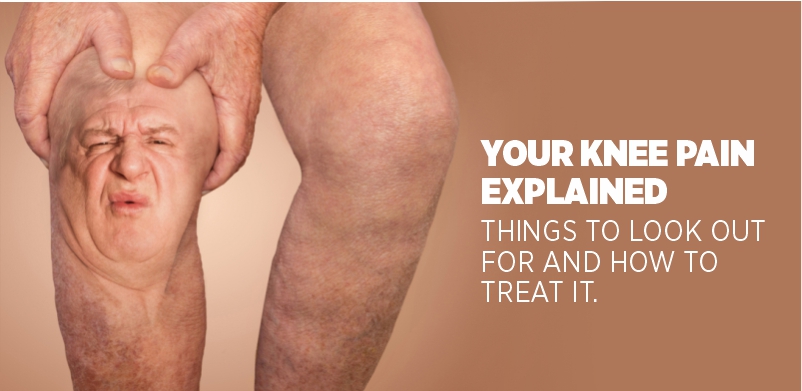© Copyright 2019. Regrow Biosciences Pvt Ltd. All Rights Reserved
Blog
© Copyright 2019. Regrow Biosciences Pvt Ltd. All Rights Reserved
Blog
Your Knee Pain Explained Things to Look Out For and How to Treat It
21st March 2023

At some point, everyone has experienced some kind of knee pain. Knee pain is no more a problem just for the elderly. Young people are also susceptible to knee pain as many either live on one end of the spectrum with a lot of physical activity and pushing their bodies constantly; or at the other extreme with absolutely no activity, perhaps at a desk with no time for exercise. People’s lifestyles have a lot to do with the way knee pain symptoms start to take a hold of their life.
The first question you need to ask yourself is ‘what are you feeling?’. Often we club all knee pain into one category, but the proper diagnosis of the root problem requires a little more digging.
The exact location of knee pain is the first area to investigate. Front knee pain is a common problem area and can be caused due to cartilage damage such as a meniscus tear, chondromalacia patella - the cartilage lining the back of the knee cap, knee arthritis, or other problems such as bursitis or tendonitis. Inner knee pain is commonly caused by the medial collateral ligament tear or the medial meniscus tear. The lesser common lateral knee pain i.e., outer knee pain may also be a ligament or a cartilage issue though other causes are possible.
Knee pain symptoms are often prevalent with other symptoms that can be important to understand the cause of the problem. This could be specific activities that bring on knee pain symptoms and other specific symptoms that are also present such as:
There are two broad underlying causes of knee pain - injury or a medical condition. However, with the knee, there is a lot of wear and tear of the cartilage that takes place which is the most common cause of knee pain. You can assess your physical activity levels which on either side of the spectrum can bring on various knee pain conditions. There are also other medical conditions such as gout that causes knee pain symptoms.
The main aim of any knee pain treatment is not only to alleviate the pain symptoms but to also ensure that they do not recur. Some knee pain treatments required may be simple and require only attention from home, but some can require medical treatment to truly cure the problem. Simple at-home treatments can include some of the following
For cartilage damage treatment, a more serious approach may be recommended since cartilage cannot heal like muscle tissue and needs some intervention to reduce further damage or to heal completely.
Arthroscopic surgery may be used to either remove loose fragments of cartilage to reduce further damage. Knee replacement is used commonly for knee arthritis where the knee is partially or totally replaced by an artificial joint. However, another approach to both cartilage damage treatment and osteoarthritis is bone cell therapy, also known as stem cell therapy.
In bone cell therapy like CARTIGROW Cell Therapy, healthy cartilage tissue is extracted to create a cell culture that is then transplanted back into the affected area of the knee. What this does is stimulate the regrowth of healthy cartilage tissue that can reverse all cartilage damage and effects of arthritis.
You can learn more about our pathbreaking treatment that has brought full mobility and completely omitted knee pain symptoms to many people who have suffered from chronic knee pain.